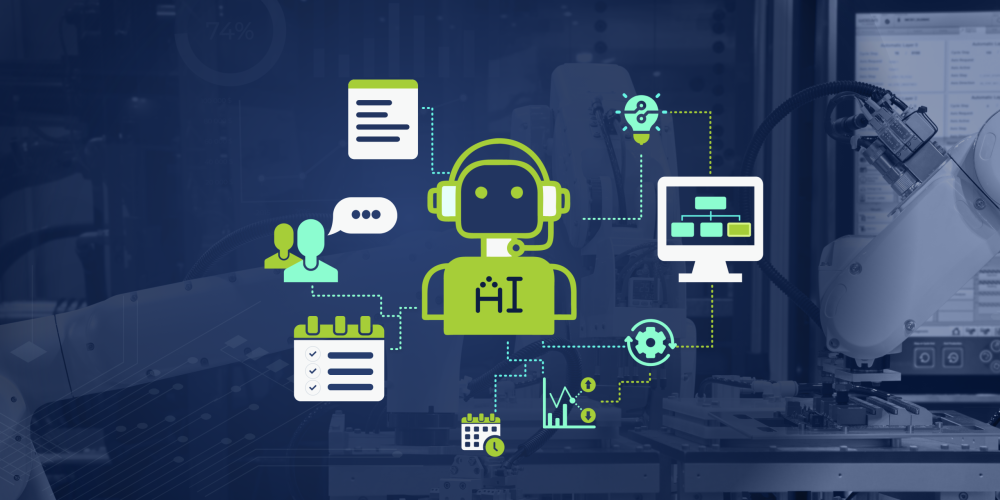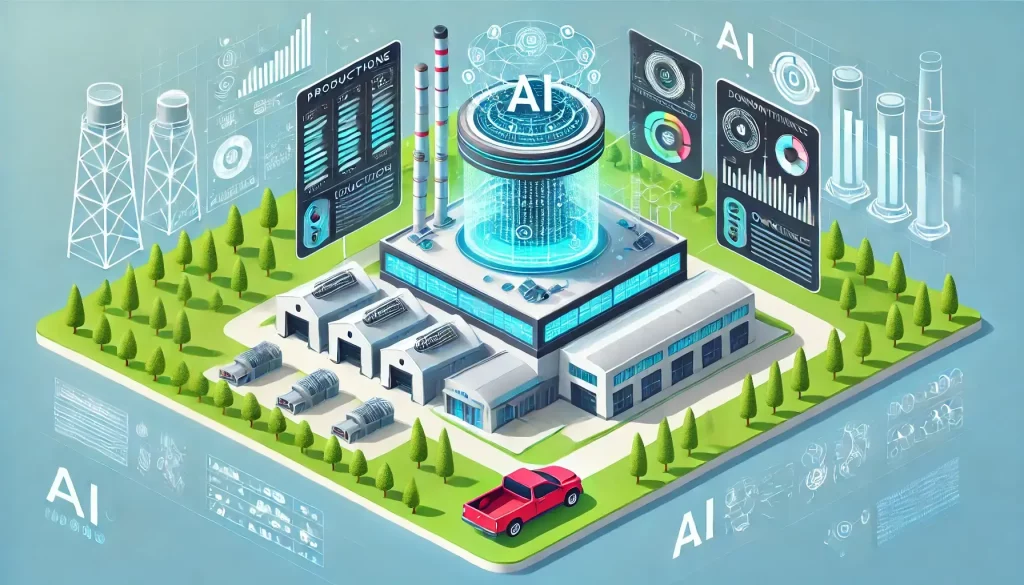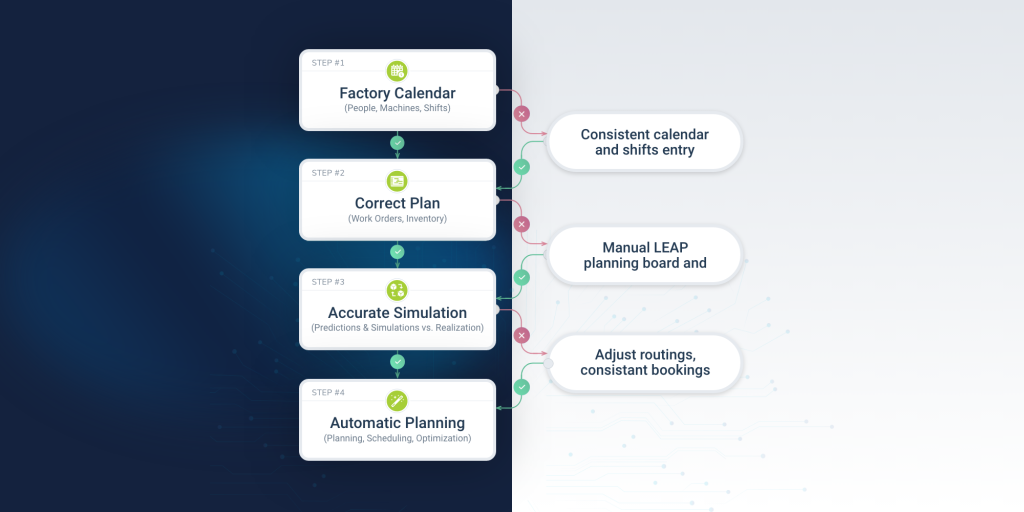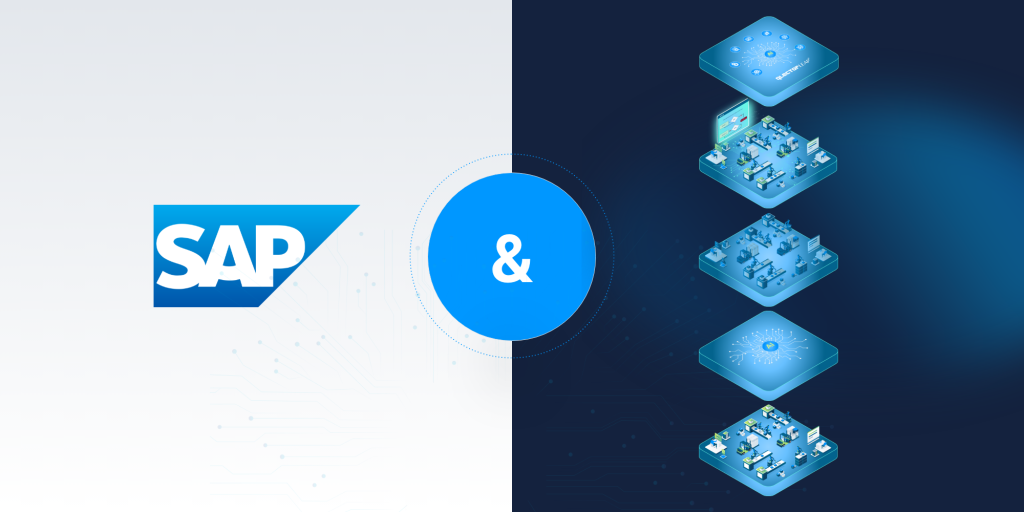Have you wondered what’s next in production planning? While AI continues to dominate the conversation, two terms are quickly rising: AI Agents and Agentic Workflows.
In this blog, we’ll explain them in simple terms—what they are, how they work on the shop floor, and why they matter to you.
If you’re still juggling multiple systems and spreadsheets, you should keep reading.
What are AI agents and agentic workflows?
Imagine a factory full of systems, each knowing a different part of the story – ERP manages supply and business operations, MES tracks production on the shop floor, QA monitors product quality, and HRM oversees workforce data. All of them are busy “talking,” but no one’s quite coordinating the whole conversation.
That’s where AI agents come in.
They’re like smart assistants that:
- Spot when something happens (e.g., a delivery delay or quality alert)
- Decide on the best response (shop for alternative parts, alert the planner, adjust schedules)
- Either handle it themselves or bring in a human when needed.
These agents carry out tasks that are traditionally managed manually, significantly enhancing efficiency, reducing errors, and freeing human planners for strategic decision-making.
When you link several AI agents in sequence, you create an agentic workflow: a living chain of automated steps that routes data, applies logic, and hands off to people only at the right moment.
Everything is tracked, compliant, and ready for audit
What does this mean for Qlector LEAP?


At the recent event “Artificial Intelligence in Practice – Innovations and Challenges”, hosted by Slovenian Sovereign Holding (SDH) and the Jožef Stefan Institute, our CEO Mateja Lavrič and CPO Viktor Jovanoski took the stage to share not only what Qlector is today, but where it’s headed next.
They announced that we plan to enhance our solution, Qlector LEAP, by focusing on AI agents and agentic workflows, and by introducing new features such as:
Chat with Documentation
Soon, LEAP users will be able to interact with various types of documentation (e.g., user manuals, internal documentation, records of past incidents, etc.) through a chat interface powered by Large Language Models (LLMs).
When a problem arises, users (such as planners) will be able to simply ask a question and receive fast, relevant answers based on documentation and past experiences.
Smart Daily Summaries for Planners
LEAP will also be able to generate daily insights such as summaries of recent production downtimes, stock-related warnings or workforce-related warnings, and suggested mitigation actions for each issue.
This automation will reduce time spent on manual reporting and help planners start their day better informed and ready to act.
Both features run on the same agentic backbone, proving that agents aren’t a buzzword, but rather a real engine.
Why this matters now
Modern shop floors are more complex than ever, and planners shouldn’t have to track every detail alone.
Qualified planners are in short supply, yet decisions still need to be timely, accurate, and fully auditable.
By automating context gathering, planners will free up their time to think strategically rather than hunt for data. Agentic workflows will handle the routine noise—connecting systems, surfacing insights, and logging every step—so planners can focus on the big picture.
Ultimately, this technology is not here to replace planners, but to give them clarity and the time to act where it counts. This new layer of intelligence is only just beginning, and we’re proud to be at the forefront of its development.
Want to see Qlector LEAP in action?
Book a DEMO to explore how LEAP can transform your shop floor — and stay tuned for the next wave of updates coming soon!
Photo Credit: Anže Godec












